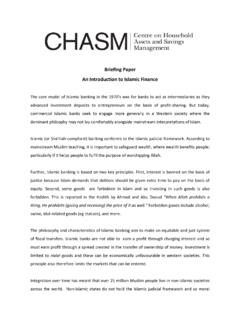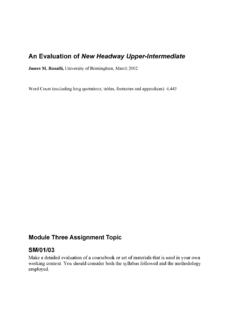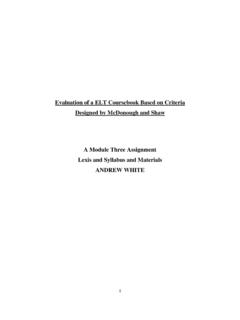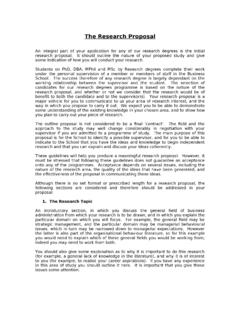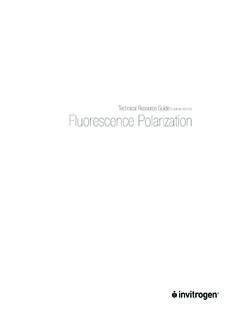Transcription of Introduction to Fluorescence Spectroscopy - birmingham.ac.uk
1 Continuous MonitoringContinuous monitoringSo far we have considered Fluorescence measurements in about continuous monitoring? Options include:1)Using a through-flow cell or fibre-optic probe on existing bench spectrometers. Not practical for field applications (except some engineering applications).2)Use in-situ fluorimeters. Commercially available but currently limited wavelength cellsWater sample is pumped into a through-flow cell. See laboratory demonstration : real-time monitoring. EEM data can be : spectrophotometer needs to be on-site . Cell fouling likely to be an probesMany instruments have an option to attach a fibre-optic probe. Bespoke fibre-optic attachments are probably also : probe can be inserted directly into water sample. Probe could remote sense Fluorescence from above water sample. Probe can be used to excite Fluorescence of solid samples.
2 EEM scans are : loss of signal between instrument probe and probe sample. Scatter from sample surface likely requires use of filter sets. Fouling of fibre-optic probe if immersed in water. Path-length is not fluorimetersMany commercially available in-situ fluorimetersare available. Predominant use has been in marine science and terrestrial dye tracing on Various buoys. Photos: Bob ChenDiverse technical specifications are available. Some examples Instruments Cyclops .. and WETLabsECO probesAdvantages: in-situ, continuous monitoring is possible. Anti-fouling strategies often employed. Sensitivity and range of analysis very good. Numerous published : All are single wavelength excitation instruments, focussed on individual wavelength pairs. Multiple instruments might therefore be necessary for many applications.
3 Fouling is likely to be an issue. Difficult to detect any interferences. Path-length needs to be defined and stable. Calibration needs to be of in-situ probes outside of dye tracing and marine science is still state-of-art .Example: Spencer et al (2007), Hydr. Procs., uses in-situ absorbance and Fluorescence probes on a Californian In-situ probes under-utilised in freshwater and engineering applications. But, currently limited to single excitation-emission wavelengths. Instrument configuration bespoke and very different from bench-top instruments. Probe fouling is a significant issue. Pre-filtering helps. Recent developments in light emitting diode technology should lead to in-situ EEM capability.
